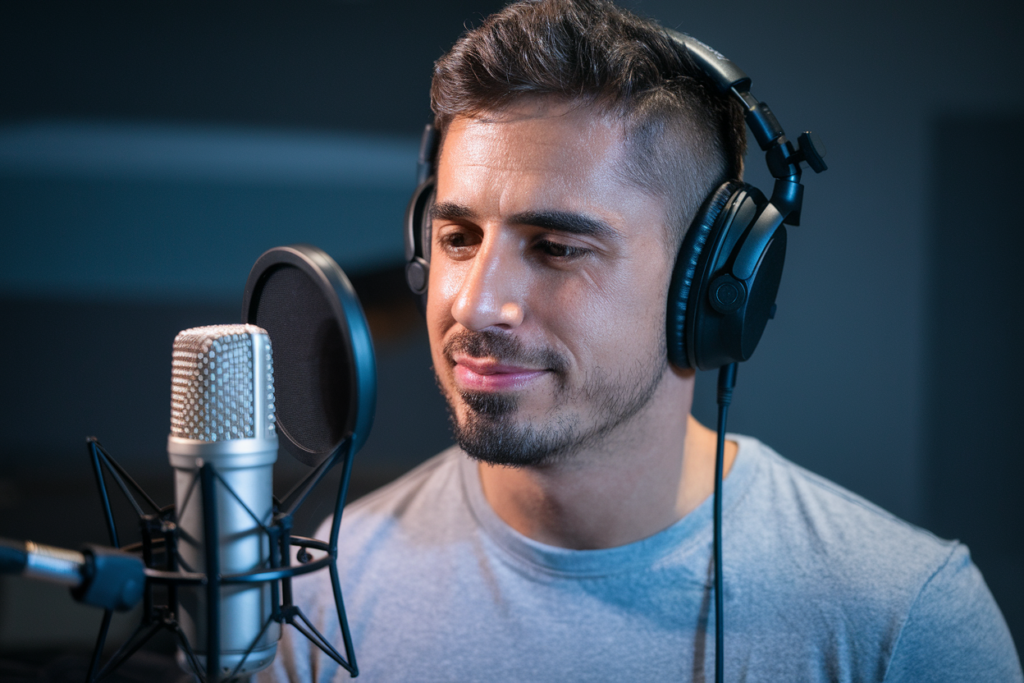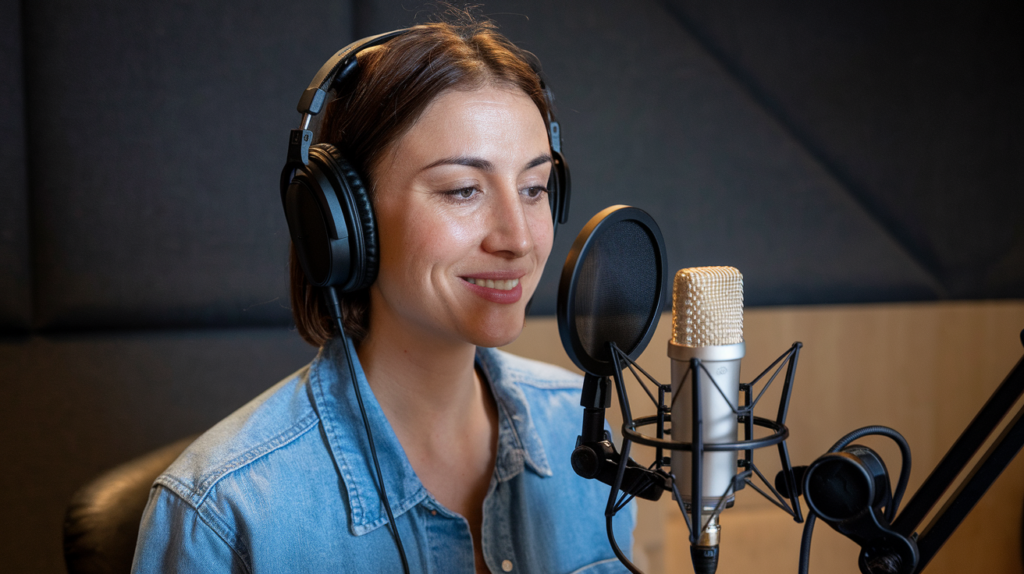When I first encountered the rich tapestry of Galician accents, I was fascinated by how diverse yet interconnected they are. Each accent tells a story, reflecting the region’s history and cultural nuances. Understanding these acoustic variations isn’t just about recognizing different sounds; it’s about appreciating the identity and heritage behind them.
In this article, I’ll explore the auditory perception of Galician accents, delving into their unique characteristics and what makes them stand out. Whether you’re a language enthusiast or simply curious about regional dialects, you’ll discover how these accents shape communication in Galicia and beyond. Join me on this auditory journey as we uncover the beauty of Galician speech patterns together.
Overview of Percepcion Auditiva De Acentos Gallegos
Percepcion auditiva de acentos gallegos involves recognizing and interpreting the distinct variations in pronunciation, intonation, and rhythm present in Galician speech. These auditory perceptions highlight the rich linguistic tapestry of Galicia, influenced by its history, geography, and cultural interactions.
Key Characteristics
- Pronunciation Variations: Distinct sounds characterize each accent. For example, the “s” sound may vary between soft and strong pronunciations depending on the region.
- Intonational Patterns: Unique melody patterns emerge within different areas. This variation leads to a distinctive musicality that defines the Galician speech rhythm.
- Vowel Quality: Differences in vowel pronunciation are notable across accents. Some regions exhibit diphthongs while others maintain monophthong sounds.
- Lexical Choices: Specific words or expressions can differ significantly among speakers from various parts of Galicia, reflecting local customs and traditions.
Importance of Contextual Understanding
Understanding these auditory cues enriches communication with native speakers. It enhances comprehension during conversations and fosters deeper connections with Galician culture.
- Listening Exercises: Engaging with audio resources featuring diverse accents strengthens listening skills.
- Conversational Practice: Interacting with native speakers allows learners to adapt their own pronunciation based on real-time feedback.
- Cultural Immersion: Participating in regional events exposes learners to authentic language use and accent varieties.
Recognizing these nuances serves as an essential step for anyone interested in mastering the Galician language or exploring its vibrant cultural heritage further.
Importance of Auditory Perception
Auditory perception plays a crucial role in understanding and appreciating the nuances of Galician accents. Recognizing these auditory features enhances communication and fosters deeper cultural connections.
Definition and Scope
Auditory perception refers to the ability to perceive, interpret, and respond to sounds. In the context of Galician accents, it encompasses recognizing distinct pronunciation patterns, intonation variations, rhythm differences, and vowel qualities. This scope includes identifying how regional dialects express local customs through unique lexical choices. Mastering these elements requires focused listening skills that allow for nuanced recognition of sound distinctions.
Role in Language Learning
Auditory perception significantly impacts language learning by facilitating comprehension and fluency. By tuning into Galician speech patterns, learners can improve their listening skills and pronunciation accuracy. Engaging with native speakers exposes learners to authentic accents, enhancing their ability to communicate effectively. Additionally, targeted listening exercises—such as distinguishing between similar sounds or practicing intonational shifts—can reinforce language acquisition while fostering appreciation for the cultural richness embedded within each accent variation.
Galician Accents
Galician accents showcase the region’s linguistic diversity, reflecting its history and cultural richness. Understanding these accents opens a window into the nuances of Galician identity.
Regional Variations
Regional variations in Galician accents stem from geographical distinctions within Galicia. Each area has distinctive features:
- Coastal Areas: Accents exhibit softer consonants and elongated vowels, influenced by maritime culture.
- Inland Regions: A stronger emphasis on consonant sounds appears, with sharper pronunciation patterns.
- Urban Centers: Urban dialects blend traditional elements with influences from other languages due to migration.
These variations not only enhance communication but also enrich the listener’s experience of Galician culture.
Characteristics of Galician Accents
Galician accents possess unique characteristics that distinguish them from one another:
- Pronunciation Patterns: Vowel quality varies significantly; for example, “e” may sound open in some regions while remaining closed in others.
- Intonational Features: Different areas have distinct melodic patterns in speech, contributing to their unique auditory signature.
- Lexical Choices: Local vocabulary reflects customs and traditions specific to each region, adding depth to conversational exchanges.
Recognizing these characteristics aids in effective communication and fosters a deeper appreciation for the linguistic landscape of Galicia.
Research on Auditory Perception of Galician Accents
Research into the auditory perception of Galician accents reveals significant insights into how these variations affect communication and cultural identity. Several key studies have focused on understanding the nuances that define these regional dialects.
Key Studies and Findings
- Perceptual Discrimination: A study by Pérez et al. (2020) examined native speakers’ ability to discriminate between various Galician accents, revealing that individuals can identify subtle differences in pronunciation and intonation with high accuracy.
- Influence on Language Learning: Research conducted by López (2019) demonstrated that learners who engaged with diverse Galician accents showed improved listening comprehension skills compared to those exposed only to standardized speech patterns.
- Cultural Recognition: A survey by Fernández (2021) indicated that awareness of accent variations enhances cultural appreciation among non-native speakers, promoting deeper connections with the local community and customs.
- Acoustic Analysis: Acoustic analyses performed by González et al. (2022) revealed distinct vowel qualities across regions, highlighting how environmental factors influence articulation patterns within different communities.
- Auditory Discrimination Tasks: Researchers employed tasks where participants identified specific sounds or accents from recorded samples, providing insight into perceptual abilities related to regional distinctions.
- Surveys and Questionnaires: Surveys gathered subjective data from participants regarding their experiences with different accents, contributing valuable qualitative information about perceptions and attitudes toward Galician speech patterns.
- Acoustic Measurements: Acoustic analysis involved using software tools to measure pitch, duration, and quality of vowels across multiple recordings from various locales, offering objective data on pronunciation characteristics.
- Field Studies: Field research allowed investigators to observe natural interactions among speakers in diverse settings, capturing authentic use of language while accounting for social contexts influencing accent variation.
These methodologies collectively enhance our understanding of how auditory perception operates within the realm of Galician accents, underscoring its importance in both linguistic studies and practical language applications.
Implications for Language Education
Understanding Galician accents enhances language education by fostering effective communication skills and cultural awareness. Recognizing the distinct auditory characteristics of these accents aids learners in developing better listening comprehension.
- Improved Listening Skills: Engaging with various Galician accents sharpens auditory discrimination abilities. Exposure to diverse pronunciations fosters an environment where learners can identify subtle differences, enhancing their overall comprehension.
- Cultural Contextualization: Learning about regional variations deepens appreciation for Galician culture. It equips students with knowledge that enriches conversations, allowing them to connect meaningfully with native speakers.
- Targeted Listening Exercises: Implementing exercises focused on the unique features of Galician accents supports active listening practices. These targeted activities encourage students to practice specific sounds and intonation patterns, improving fluency.
- Conversational Practice: Regular interaction with native speakers immerses learners in authentic language use. This exposure encourages adaptability in communication styles, helping students navigate different accent variations effortlessly.
- Resource Utilization: Utilizing multimedia resources that showcase various accents enhances the learning experience. Audio clips, videos, and podcasts featuring native speakers provide practical examples of pronunciation and rhythm.
- Curriculum Development: Integrating a focus on accent recognition within language curricula prepares students for real-world interactions. Educators can incorporate lessons on distinguishing between major dialects while emphasizing the importance of cultural identity.
- Community Engagement: Encouraging participation in local events or workshops allows learners to practice their skills in authentic settings. Community involvement offers opportunities for meaningful exchanges that reinforce the relevance of linguistic diversity.
By prioritizing these aspects within language education frameworks, educators can effectively equip students with vital skills necessary for navigating the rich tapestry of Galician speech patterns while promoting a greater understanding of cultural nuances inherent to each accent variation.
Conclusion
Exploring the auditory perception of Galician accents has deepened my appreciation for the intricate relationship between language and culture. Each accent tells a unique story shaped by history and geography, inviting us to listen more closely.
Embracing these variations not only enhances communication but also fosters meaningful connections with native speakers. By engaging actively with these rich linguistic features, I’ve found that learning becomes a journey filled with discovery and cultural immersion.
As we continue to explore Galician accents together, I’m excited about the insights that await us in this vibrant tapestry of sound. Let’s keep listening and appreciating the beauty embedded within each variation.








